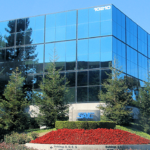Intel Corp reported a drop in second-quarter profit and revenue on Wednesday but results topped projections and the company forecast a much better performance than analysts expected for the third quarter.
The chip maker said that revenue in the three months ended June 27th dropped 4.6% to $13.195 billion from $13.831 billion a year earlier, topping analysts projections for a decline to $13.04 billion. Net income slid 3.2% to $2.706 billion from $2.796 billion in the quarter ended June 28th, 2014. However, profit was flat on per-share basis at 55 cents as the number of outstanding shares fell, outstripping forecasts of 50 cents.
The company also cut its capital expenditure forecast for the second time this year, projecting capex of $7.7 billion in 2015, plus or minus $500 million, after it had slashed expectations to $8.7 billion from $10 billion in April.
The chip maker also sounded a much more positive note for revenue and profit in the third quarter, betting on strong sales of chips for server systems, as well as upcoming products that could bolster PC demand, particularly the Skylake microprocessors and the launch of Microsofts new Windows 10 operating system.
Intel reported a gross margin of 62.5% in the second quarter and predicted a jump to 63% in the current one, plus or minus a couple of percentage points. The company pinned Q3 sales at $14.3 billion, plus or minus $500 million, topping analysts forecasts for a gross margin of 61.33% on revenue of $14.08 billion in the third quarter.
“Second-quarter results demonstrate the transformation of our business as growth in data center, memory and IoT accounted for more than 70 percent of our operating profit and helped offset a challenging PC market,” said Chief Executive Brian Krzanich. “We continue to be confident in our growth strategy and are focused on innovation and execution.”
The company has struggled in recent years with a globally declining PC market as an increasing number of consumers switch to mobile devices. Demand saw a pick-up in 2014 when Microsoft ended support for its Windows XP operating system, which urged businesses to buy new PCs, and also began to phase out support of Windows 7. However, that demand has faded this year.
In response to the weakening PC market, which is still Intels biggest source of revenue, the company has been expanding its range of higher-margin server chips used in data centers and agreed in April as part of these efforts to buy Altera Corp, which makes programmable chips used in different markets.
“We continue to forecast robust growth rates of the data center group, Internet of Things group and NAND businesses, which we expect to mostly offset the PC decline,” said Stacy Smith, Intel CFO. “Our expectations are that the PC market is going to be weaker than previously expected” he added.
Revenue from the PC business slid 14% from a year earlier to $7.5 billion, while sales generated by the data center business, the firms second-largest, jumped 10% to $3.9 billion. Revenue in the Internet of Things division grew at the annual pace of 4% to $559 million, Intel said, adding that its non-PC business accounted for 40% of Q2 total sales.
Intel Corp settled 0.13% higher at $29.69 per share on the NASDAQ on Wednesday, marking a year-on-year drop of 6.37% and valuing the company at $140.85 billion. Shares were up 2.59% at $30.46 by 09:39 GMT in pre-market trade on Thursday. According to CNN Money, the 40 analysts offering 12-month price forecasts for Intel have a median target of $33.50, with a high estimate of $40.00 and a low estimate of $23.00. The median estimate represents a +12.83% increase from the last price of $29.69.





